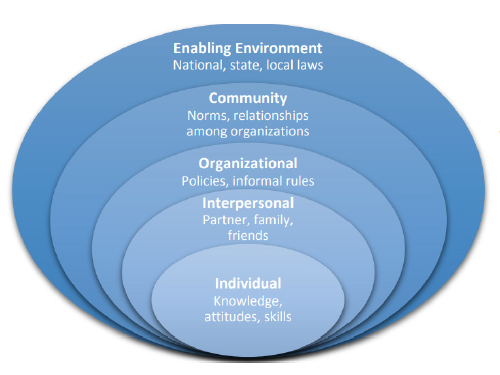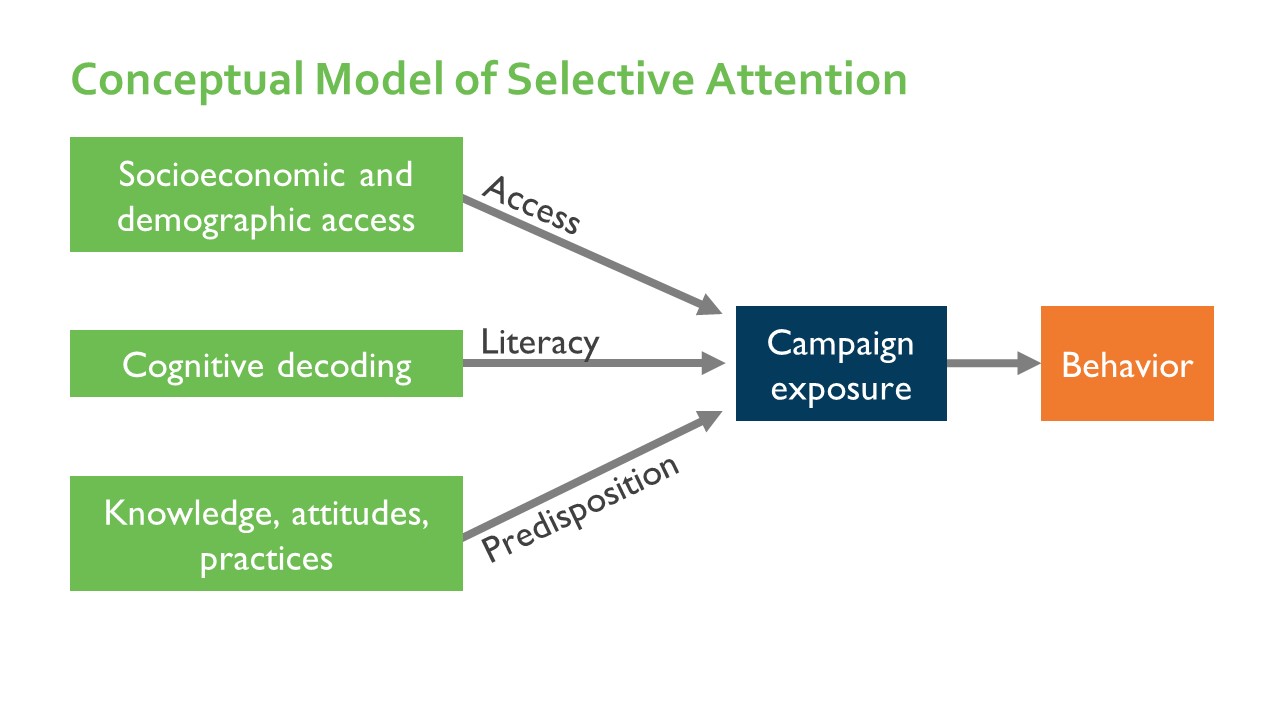New Interactive Learning Courses to Strengthen Social and Behavior Change Measurement, Monitoring, and Evaluation for Family Planning Programs

Family planning programs are often faced with the challenge of transferring knowledge into behavior. A growing body of evidence suggests that social and behavior change (SBC) interventions improve family planning/reproductive health outcomes by directly increasing contraceptive uptake or increasing contraceptive use through pathways that address intermediate determinants such as attitudes around family planning.1 Some SBC interventions are more effective than others, but their effectiveness varies depending on the measures we use to assess them. Standardized measurement of SBC approaches for family planning, guided by a defined theory of change, is critical to understanding their effectiveness and contributing to success.
Over the past six years, Breakthrough RESEARCH has generated evidence to support better measurement of SBC and its application in improving family planning program design and outcome monitoring. Learnings from the research are available as part of three new interactive online learning courses developed by the project. The first course provides guidance on how to incorporate a behavioral theory of change into program design; the second provides instruction on how to capture and use SBC program or campaign exposure data to inform, monitor, and evaluate program performance; and the third focuses on understanding and measuring provider behavior change (PBC). The courses, available in English and in French, are self-guided and include a post-test, instructional video content, PowerPoints, and opportunities to further the discussion with other SBC professionals. The objective of these courses is to improve the capacity of SBC practitioners and researchers to use SBC approaches to identify and apply solutions to challenges. These courses are a “must” for program designers and planners who want to strengthen SBC programs or SBC outcomes in their family planning programs.
The first course, Monitoring and Evaluating Social and Behavior Change Approaches, is designed for program managers and midlevel professionals who want to understand the rationale and process for using a theory-based approach to designing programs and measuring success. This course aims to support SBC programs by explaining how programs can develop a robust theory-driven monitoring and evaluation (M&E) plan that provides evidence to strengthen implementation using behavioral theories of change such as the socioecological model (see Figure 1). Through short videos and an accompanying How-To guide, the course fosters strengthened program evaluation through the use of an M&E plan that reflects the behavioral change pathways in the program’s defined theory of change. The course walks users through developing an M&E plan that outlines the indicators used to measure progress and the results following the change pathways, methods for how these indicators are going to be collected and monitored, and plans for how data will be analyzed and results will be communicated.
Figure 1. The Socioecological Model of Behavior

The second course, Measuring Social and Behavior Change Program or Campaign Exposure, aims to support SBC programs that apply different approaches, such as mass media and interpersonal communication, to reach target audiences. This course is designed for M&E officers to help them understand how to capture and use SBC exposure data to inform, monitor, and evaluate SBC program performance. The course provides an overview of SBC program or campaign exposure measures, including measurement challenges, and how to minimize error. Determining the extent to which target audiences are exposed to SBC approaches requires methods that are specific to the chosen approach. For example, household surveys could be used to assess exposure to a mass media campaign, while social media monitoring can be used to assess exposure to internet-based campaigns. Exposure measures can be used to assess respondent awareness of, sentiment towards, and comprehension of a campaign message. In addition, exposure methods and measures should be tailored to address measurement challenges such as selective attention and social desirability bias (see Figure 2). The course provides examples of questions and data sources along with explanations for how exposure data can be used to inform SBC programs and approaches.
Figure 2. Conceptual Model of Selective Attention

The third course, Measuring Provider Behavior Change, helps program planners and designers better understand PBC initiatives and their potential impact on family planning service delivery and quality. Through short videos and an accompanying How-To guide, it helps advance PBC measurement by providing frameworks and illustrative examples of how PBC measurement can inform program planning and design. PBC can be difficult to measure because few validated measures exist, partly due to lack of consensus on what should be measured, and assessing the impact of PBC interventions often requires linking provider behaviors to client- and population-level outcomes, which is costly and methodologically difficult. Different methodological approaches—such as mystery clients, client exit interviews, and provider interviews—can overcome these challenges, but each has unique pros and cons. To measure provider behavior, these methodologies are best used as part of a multi-method strategy. Within these methodological approaches, the measures selected to capture provider behavior should be guided by a theory of change that reflects the intended change pathway. This course highlights these considerations and guides users through ways to mitigate these challenges and strengthen PBC measurement.
These courses are designed to help program planners, implementers, and evaluators put the evidence and learning generated by Breakthrough RESEARCH into practice.




